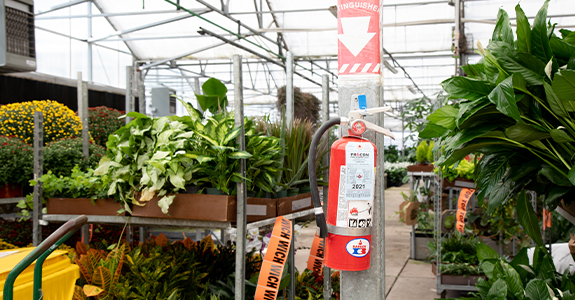Driver fatigue: Prevention tips for drivers and business owners

Operating a vehicle while tired is common among drivers—and highly dangerous. In 2023, 633 people in the U.S. died in crashes related to drowsy driving. According to the National Highway Traffic Safety Administration, the majority of these types of crashes:
Occur in late afternoon or between midnight and 6 a.m.
Involve a single driver running off the road
Take place on rural roads and highways
Commercial drivers, and horticulture workers in particular, are especially vulnerable to the risks. As a business owner, it’s critical that you take steps to manage driver fatigue to help protect your employees and others.
Driver fatigue by the numbers
Here are a couple examples of the impact of drowsy driving:
According to the Centers for Disease Control and Prevention, 1 in 25 adult drivers reported they have fallen asleep while driving in the past month.
Fatigue-related trucking accidents cost an estimated $20 billion annually. What’s harder to quantify is the mental toll such accidents can take on operators.
Factors that lead to driver fatigue in the horticulture industry
Each industry has its own set of contributing factors to driver fatigue, and this industry is no exception. A few fatigue triggers include:
Seasonality surges: Peak times such as Valentine’s Day and Mother’s Day bring added pressure to perform faster and more frequent deliveries to keep up with demand.
Long days: Market pickups often mean early-morning trips when drivers are naturally fatigued, followed by a full day on the road.
Rural delivery routes: For drivers working in remote locations, rest areas adequate for taking breaks may be hard to find.
Climate stress: Summertime deliveries bring added exposure to heat and sun, which can further fuel fatigue or other forms of disorientation.
Temporary workers: Seasonal drivers may be less experienced, unaware of company policies, and unfamiliar with the signs of drowsy driving.
Many of these factors may be in play at the same time, heightening the risk of impairment.
What are the signs of drowsy driving?
Educate your drivers to recognize common signs they’re too tired to drive. These include but aren’t limited to:
Frequent yawning or blinking
Zoning out
Irritability
Drifting between lanes
Difficulty remembering the last few miles
Slower reaction times or missed traffic signals
How commercial auto insurance fits into your fatigue risk plan
Commercial auto insurance typically doesn’t have exclusions that would prevent coverage of accidents caused by drowsy driving. But it’s important to review your policy terms with a licensed agent to understand your specific protections.
Like any accident, a fatigue-related crash could raise your premiums, expose you to liability, and potentially damage your company’s reputation. Proactive prevention is important no matter how robust your policy is.
Don’t forget to help yourself concerning drivers and your business—maintain clear documentation, including driver logs, training records, and telematics data, as well as records of all training and certifications.
How we can help with your driver and delivery protection
With more than 135 years of experience protecting horticulture businesses, Hortica, a brand of the Sentry Insurance Group, is a trusted provider of insurance solutions specifically tailored to greenhouses, garden centers, florists, plant nurseries, and landscapers. We understand the unique demands on drivers brought by seasonal schedules, perishable materials, mobile delivery crews, and specialized equipment.
We can also help you with risk management, safety recommendations, and in-house claims service to help protect your operations.
If you’d like assistance in training resources, claims analyses, workshops, and on-site consultations to help identify and mitigate driver risks, contact us. We’re here to help you and your business.

Why driver safety training for new hires is essential in the horticulture industry

Help protect your horticultural business with risk-relevant insurance coverage

Workplace fire safety: 10 tips for horticultural businesses
The information in this article is for informational or entertainment purposes only. View our disclaimer by going to terms and conditions and clicking on Learning Center disclaimer in the table of contents.

